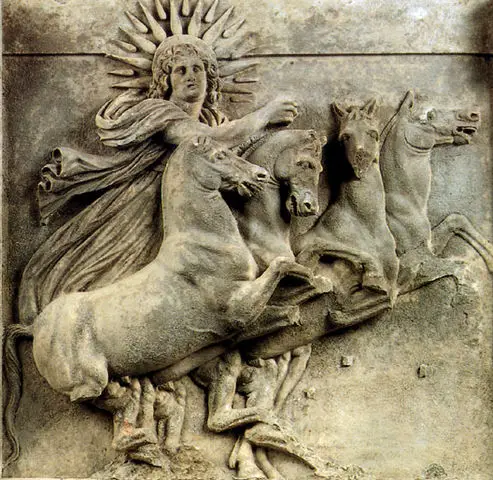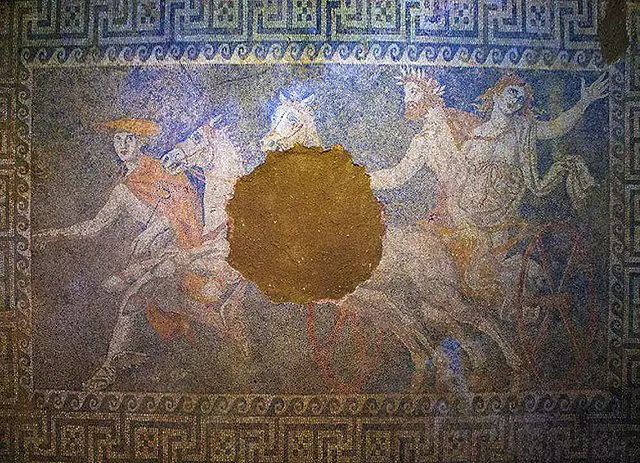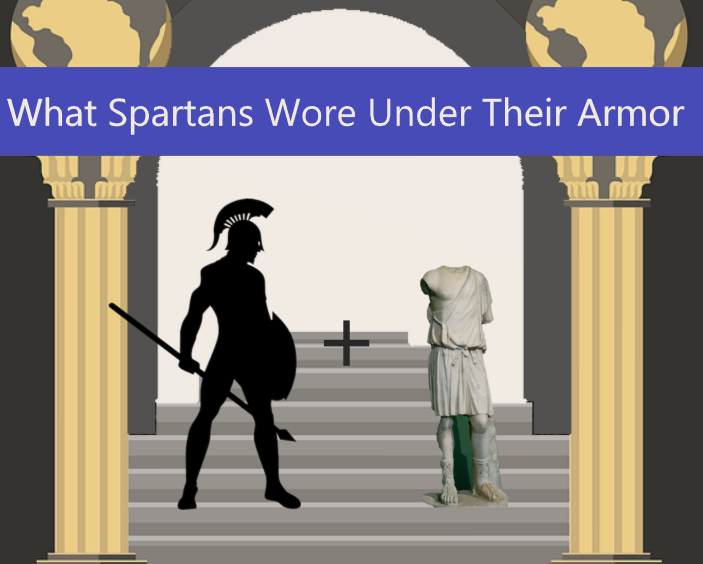
| Further Reading | Did Spartans Wear Red Cloth As Part Of Their Uniform? |
When people think about the ancient Greek Spartan soldier they often think of bronze shields, armor, and spears with a red cape. However, under this armor what did the average Spartan soldier wear? Wearing just bronze armor would be not only cumbersome but also extremely uncomfortable. That’s why Spartan soldiers would wear 2 things underneath their armor.
Generally speaking, the Spartan warrior would wear two things under his armor to protect his armor and himself. First, most Spartans would wear a Doric chiton that the armor would go over. Second, light Spartan infantry would wear a chlamys instead of a chiton.
Most images of Spartans clad in just bronze armor are false. Spartans fought with several layers of garments under their armor. Hollywood likes to portray Spartans as musclemen who fought in slow motion, this was obviously not the case.
Here at The History Ace, I strive to publish the best history articles on the internet. If at the end you enjoyed this article then consider subscribing to the free newsletter and sharing around the web.
Without further ado, here are the 2 things that Spartans wore under their armor.
Spartan Under Armor Garment 1: The Chiton
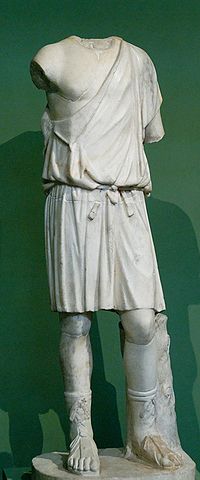
By far the most popular undergarment that Spartan soldiers would wear would be a standard white/grey wool or linen garment called a chiton.
This chiton was made of wool or linen depending on the class of the Spartan soldier. While in theory, each Spartan citizen was equal some citizens had access to better quality fabrics than others from their estates. Those who could have their helot workers/slaves tend to large herds of sheep could build clothing of wool. If the Spartan family did not have access to these sheep they would have to use flax to build a linen chiton.
The chiton itself was a large square piece of fabric that was wrapped around the body. On the top, the chiton was draped over one shoulder while the other shoulder was exposed. A leather or flax belt held the chition in place above the knees. These chitions were often left as neutral grey or white in color. This was due to Spartan society valuing utility and simplicity above lavishness or luxury.
Chitons were not unique to Sparta and were worn around ancient Greece. However, the Spartan/Doric chiton was unique in its utility. A Doric chiton was known to be significantly shorter than other Greek chitons because it was designed to be used during physical exercise. Historians know of this due to reports of young Spartan women competing in games with ‘scandalous’ knee-high chitons for ease of movement.
The chiton itself was a long fabric that was wrapped around the body and then held in place above the left shoulder by a large pin called a peronai. Later this pin would be replaced with a large bronze clasp that is often mistaken as a modern-day button.
Since the right arm and shoulder were free these chitons were perfect for the Spartan army. The left arm held the large bronze shield, this arm was covered with the chiton’s linen/wool fabric which helped to absorb blows to the armor or shield. The right arm was free of the fabric and held the long spear which the Spartan soldier would thrust at their opponent through the shield wall.
The Spartan soldier’s chiton was sometimes painted red to hide wounds inflicted during combat. This served more as a moral booster for the Spartan soldiers and historians are unsure just how much red was used in the Spartan soldier’s arsenal.
In essence, the chiton served as both the Spartan’s undergarment and also offered a small degree of protection. However, it was not the only thing that Spartans would wear under their armor.
Spartan Under Armor Garment 2: The Chlamys and Exomis
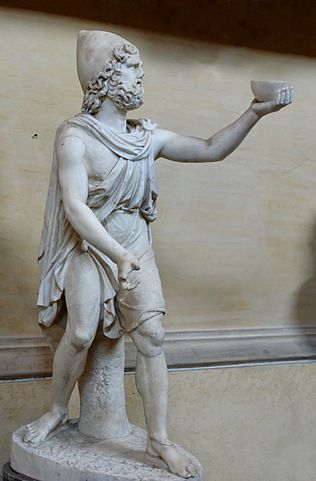
While most of the Spartan army would wear the chiton under their armor the lighter infantry and scouts would wear a different form of clothing. This under-armor garment was a combination of a circular tunic called the exomis and a long heavy cape called the chlamys.
In order to build an exomis you would have to take two large square pieces of linen/wool and stitch them together. The top square was designed so that it could be draped over a human shoulder. Unlike the previous chiton, this piece of clothing was in 2 parts and was one solid length. Because of this, the tunic section was capable of being heavier and more durable.
The Spartan soldier would wear this exomis tunic and use a bronze clasp to tie to fasten the top square over their shoulder. Generally speaking, the exomis tunic was much sturdier and heavier than the previous chiton. This increase in durability was perfect for light infantry and scouts in the Greek mountains.
Over the top of the exomis tunic Spartan soldiers would wear the Chlamys cloak. This large cloak was typically made from a thick wool or linen fabric that was designed to protect the warrior from the elements. This cloak was so thick that in a pinch it could be used as a makeshift shield for the soldier as well.
Up until the 5th century BC, this chlamys and exomis tunic combo was used primarily as the under-armor garment for Spartan scouts. Spartan scouts who had to survive in the wilderness for a period of time would benefit from the heavy cloak and tunic to protect them and keep themselves warm.
However, starting in the 5th century BC most Greek hoplites started to adopt this tunic as their standard under-armor garment. This was because the exomis and chlamys combo gave the hoplite warrior significantly better protection when compared to the standard chiton. As far as historians are aware Spartan soldiers followed this practice as well.
Conclusion
There you have it; the 2 things Spartans wore under their armor.
These under-armor garments were designed to provide maximum protection for the warrior while also allowing for ease of movement. Contrary to popular media presentations Spartan soldiers did not fight just wearing bronze armor. They were often clothed in linen or wool tunics.
I hope you enjoyed the article. Here at The History Ace, I strive to publish the best history articles on the internet. If you enjoyed this article then consider subscribing to the free newsletter and sharing it around the web.
Further, you can check out some of the other articles below.
-
The 2 Things Spartans Wore Under Their Armor

What did Spartans wear under their bronze armor? Spartan warriors would wear 2 things under their armor to protect themselves during combat.

